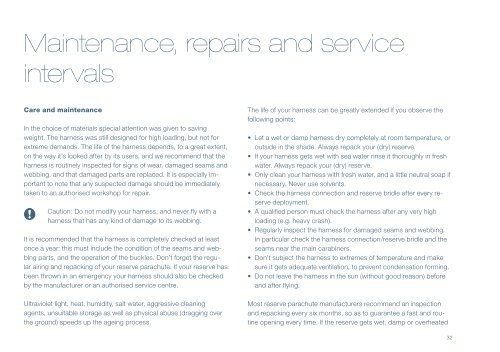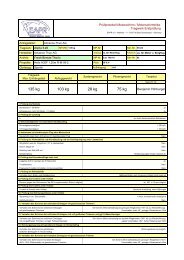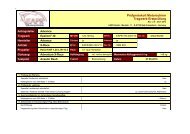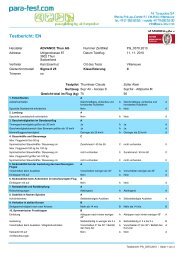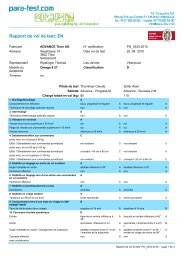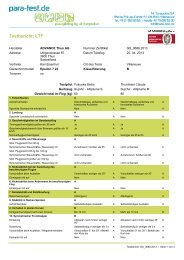User manual LIGHTNESS - Advance
User manual LIGHTNESS - Advance
User manual LIGHTNESS - Advance
- No tags were found...
You also want an ePaper? Increase the reach of your titles
YUMPU automatically turns print PDFs into web optimized ePapers that Google loves.
Maintenance, repairs and serviceintervalsCare and maintenanceIn the choice of materials special attention was given to savingweight. The harness was still designed for high loading, but not forextreme demands. The life of the harness depends, to a great extent,on the way it’s looked after by its users, and we recommend that theharness is routinely inspected for signs of wear, damaged seams andwebbing, and that damaged parts are replaced. It is especially importantto note that any suspected damage should be immediatelytaken to an authorised workshop for repair.Caution: Do not modify your harness, and never fly with aharness that has any kind of damage to its webbing.It is recommended that the harness is completely checked at leastonce a year: this must include the condition of the seams and webbingparts, and the operation of the buckles. Don’t forget the regularairing and repacking of your reserve parachute. If your reserve hasbeen thrown in an emergency your harness should also be checkedby the manufacturer or an authorised service centre.Ultraviolet light, heat, humidity, salt water, aggressive cleaningagents, unsuitable storage as well as physical abuse (dragging overthe ground) speeds up the ageing process.The life of your harness can be greatly extended if you observe thefollowing points:• Let a wet or damp harness dry completely at room temperature, oroutside in the shade. Always repack your (dry) reserve.• If your harness gets wet with sea water rinse it thoroughly in freshwater. Always repack your (dry) reserve.• Only clean your harness with fresh water, and a little neutral soap ifnecessary. Never use solvents.• Check the harness connection and reserve bridle after every reservedeployment.• A qualified person must check the harness after any very highloading (e.g. heavy crash).• Regularly inspect the harness for damaged seams and webbing.In particular check the harness connection/reserve bridle and theseams near the main carabiners.• Don’t subject the harness to extremes of temperature and makesure it gets adequate ventilation, to prevent condensation forming.• Do not leave the harness in the sun (without good reason) beforeand after flying.Most reserve parachute manufacturers recommend an inspectionand repacking every six months, so as to guarantee a fast and routineopening every time. If the reserve gets wet, damp or overheated32


